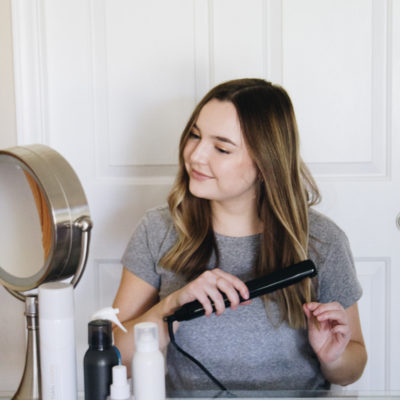When we imagine self-care, we tend to think of very tangible practices, such as face masks, serums, or tending to plants. While those efforts toward self-care are obviously beneficial, I’ve added a less conventional practice to my self-care routine. In my daily life, my favorite way to take care of and spend time with myself is by reading anything I can get my hands on. This hobby of mine has morphed into a way to share my voice via my bookish blog and Instagram. In the process, I discovered how cathartic it can be to race-bend characters in books in order to imagine myself, and other people of color, in well-known fiction.
It’s no secret that there has been a lack of representation of BIPOC in fiction, in terms of both writers and characters. However, while spaces like television have become more inclusive of people of color, either through new narratives or race-bending, the world of best-selling fiction has had a slower start to conversations around inclusivity.
When I think of some of my favorite contemporary reads (Normal People, In Five Years, The Light We Lost, etc.) I can’t help but notice that there’s no reason why these characters have to be imagined as white. Then I ask myself: “Why couldn’t these characters look like me?”
Sometimes characters are described as having distinctly White features. However, their racial background often isn’t crucial to the story, even if these novels have plotlines that are contingent on the main character’s appearance (think Harry’s scar in Harry Potter and Celaena’s sapphire eyes in Throne of Glass). Even in these examples, features like Harry’s scar or Celaena’s eyes aren’t exclusive to the White racial identity or European ethnic heritage. Overall, this nondescript wiggle room allows the readers to “[allow] for a character to have a deeper cultural impact and oftentimes have a more fleshed out backstory and personality” as Geeks of Color put it.
Prior to actively race-bending characters, I – a multi-ethnic Latinx woman – could never have said that I see myself in contemporary fictional characters like Marianne from Normal People, Lydia in The Two Lives of Lydia Bird, or Beatrice in American Royals. However, as I began imagining these characters as BIPOC, defiant of stereotypes, my perspective changed. To me, Marianne Sheridan and Hermione Granger are black women, smart enough to take care of themselves and strong enough to ask for help when they can’t – characteristics that aren’t solely indicative of Whiteness. Many readers imagine Harry Potter as having Indian heritage. Taking a look back at classic fiction, I imagine Pride & Prejudice with an entirely race-bent cast. Quick pause for my dream cast: Ana de Armas as Elizabeth, Tessa Thompson as Jane, Henry Golding as Bingley, and finally… Dev Patel as Darcy! I could go on! *heart eyes emoji*
Race-bending White fictional characters doesn’t erase the cultural aspects of each racial identity, but instead makes room for culture-driven nuance that can only add to these classic tales.
How this becomes an act of self-care:
If you want to start race-bending as you read, I suggest thinking through the stereotypes associated with each racial identity as you race-bend the characters. Imagining characters in this way is meant to be subversive and inclusive of BIPOC, not to further entrench us into boxes created by stereotypes. If you start to feel silly while trying this, try picturing a BIPOC loved one or colleague in the role!
As we navigate spaces of entertainment, it is important to stop viewing White identity as the default and instead to begin to open our minds to how things could be different. Regardless of your racial and ethnic background, race-bending characters to better reflect the world we live in is a radical form of self-care that offers us a chance to learn more and better understand those who are different from us.
 Using Trunk Club to Update My Spring/Summer Wardrobe
Using Trunk Club to Update My Spring/Summer Wardrobe 5 Tips For Styling a Simple Summer Dress
5 Tips For Styling a Simple Summer Dress 5 Ways to Style a Bandana
5 Ways to Style a Bandana 3 Different Ways to Curl Your Hair
3 Different Ways to Curl Your Hair How to Master the 5-Minute Makeup Routine
How to Master the 5-Minute Makeup Routine Amazon Beauty Buys Under $25
Amazon Beauty Buys Under $25 3 Ways to Make Your next Trip More Memorable
3 Ways to Make Your next Trip More Memorable Tips for Digital Spring Cleaning and Organizing
Tips for Digital Spring Cleaning and Organizing Color Trend: Marigold
Color Trend: Marigold Mental Health Update: The 3 Major Changes I Made to Get Out of Depression
Mental Health Update: The 3 Major Changes I Made to Get Out of Depression 5 Unexpected Ways to Unwind After Work
5 Unexpected Ways to Unwind After Work How to Know You’re in a Controlling Relationship
How to Know You’re in a Controlling Relationship 4 Questions I get Asked as a Professional Resume Writer
4 Questions I get Asked as a Professional Resume Writer How to Make Friends at Work
How to Make Friends at Work Getting Out of the ‘Busy’ Mindset
Getting Out of the ‘Busy’ Mindset Ask Amanda: How do I pursue the career I want without formal training?
Ask Amanda: How do I pursue the career I want without formal training? Ask Amanda: How Do I Find a Therapist?
Ask Amanda: How Do I Find a Therapist? Ask Amanda: How do I stop being jealous in my relationship?
Ask Amanda: How do I stop being jealous in my relationship?




Danielle Says
This is such a great blog post and this is such an important topic at the moment!
Danielle
https://www.thereluctantblogger.co.uk/